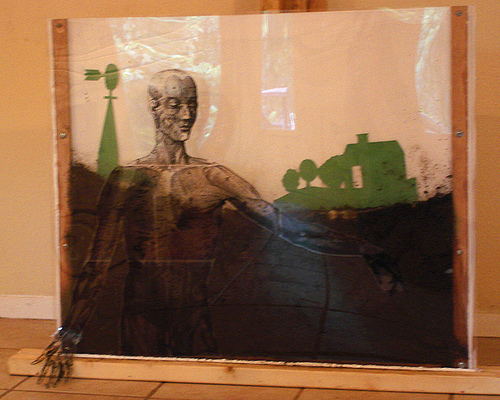I. THE ARCHEOLOGICAL REPORT
The Mussha clan, located in the Chimanimami district of Zimbabwe's southeastern province,
Manicaland, bury their deceased chiefs by way of ancient ritual custom.
Upon the death of the chief, a bull is slaughtered and the king is wrapped in its hide and laid in
his grave. The bull's meat is given to mourners with the exception of the chief’s family, as
ingestion of the bull's meat by relatives is viewed as cannibalism.
Before the grave is covered, all of the cockerels in the village are slaughtered with the exception
of the deceased chief’s favorite. The chosen bird is then placed alive in the chief’s grave and
the grave is closed. A hollow shaft dug into the grave ensures that the bird will survive until
the next morning.
The next day, when the cockerel crows from the grave to announce the dawn, the villagers
know that the bird fulfilled his duty of escorting their chief to his ancestors. The crowing
also affirms that the chief has been accepted by his ancestors and will now become an invisible
guardian of the tribe. Because all other cockerels have been slaughtered the day before,
there is no possible confusion between the chief’s bird and others in the village.
The cockerel is left in the grave to starve to death, and the day of the chief’s burial becomes
sacred. Anyone who fails to observe the sacred day (by working) is visited by the wrath of
ancestral spirits. This attack is generally expressed through animal assaults (i.e. baboons
destroying crops, eagles in the fields, etc.)
II. THE EXPERIMENT
Objective:
Examine the life/death cycles of the Muusha tribe, with special attention given to the life/death transition.
Hypothesis:
Plasticity between humans and animals is greater than has been accounted for thus far.
Procedure:
1. Modify developmental tools of children to use as the apparatus for observation
2. Translate terms of burial ritual to scientific terms in a laboratory setting
3. Recreate burial ritual
4. Record data relating to specific moment of transition
5. Process findings
Materials:
1. Self-contained ecosystem for small invertebrates
2. Additional developmental tools of children (for audio)
3. Animal guardians to transport spirit to the afterlife
4. Illuminated observation tables
Observations:
Additional photographs
Conclusion:
Results confounded by complications in experiment. Self-contained ecosystem transformed into functional vermicomposting chamber.
